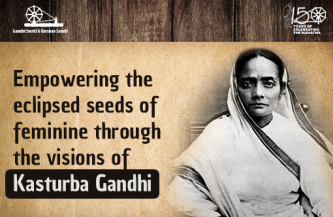A Glimpse of the Indigenous Tribes of Manipur (Part 1)

Manipur is a multi-ethnic state located at the easternmost part of India. It has a total population of 28, 55,794 according to 2011 Census of India covering an area of 22,327 square kilometers. Out of this, 58.9% represents the valley population and 41.1% represents the population of the hills.
The hills are inhabited mainly by the tribals with a total population of 11, 67,422. Of which, there are 33 recognised tribes (in Manipur) which either fall under the Nagas or the Kukis, the two different conglomerates of Manipur tribals. The two communities are differentiated mainly from their distinctive dialects, costumes, cultures and traditions. The Nagas have a history of headhunting and a strong warrior tradition whereas the Kukis are a sub-family of the Tibeto-Burman language group which is also related to Mizos of Mizoram and Chins in Myanmar.

Various Tribes of Manipur (Image Courtesy: Gary P Karong)
The recognized tribes who made their home in Manipur for years now are Aimol, Anal, Chiru, Chothe, Gangte, Inpui, Hmar, Kharam, Khoibu, Koirao, Kom, Lamkang, Liangmai, Mao, Maram, Maring, Mate, Monsang, Moyon, Paite, Poumai, Purum, Ralte, Rongmei (Kabui), Simte, Suhte, Tangkhul, Tarao, Thadou, Thangal, Vaiphei, Zeme and Zou.
All the tribes generally communicate in their own dialects among the same ethnic groups while communication between different groups is carried out in Meitei or Manipuri language, the official language of Manipur. Despite the socio-political and linguistic differences among them, all the ethnic tribes originate from the same Mongoloid group having similarities in cultural and traditional domains. Rice is consumed as the main food by all tribes of Manipur whereas meat, fish and seasonal vegetables are being the favorites.
In this blog, we shall discuss 10 out of the total 33 tribes of Manipur and follow up with a series of two more blogs studying the remaining tribes. The descriptions of the recognised scheduled tribes of Manipur are as below.
1) Aimol: Aimol is listed under the Kuki tribes found living both in Assam and Manipur. They speak Aimol language, classified under Kuki-Chin-Mizo language. They are based in parts of Chandel district, Senapati district and around Loktak Lake in Bishnupur district. They practice slash and burn agriculture and are primarily Christians.

Aimol Tribe (Image Courtesy: E-pao.net)
2) Anal: The Anal tribe is one of the oldest dwellers in the Southern hills of Tengnoupal district. They were recognized as a tribe in 1951. Earlier they were recognized as one of the oldest Kuki tribes but nowadays they identify themselves as a Naga tribe.
3) Chiru: Chirus are one of the earliest inhabitants of Manipur and Assam. It was recognized as a Scheduled Tribe in 1956. They are found in four districts of the state, in Tamenglong, Kangpokpi, Churachandpur and Thoubal district. They speak Chiru dialect, one of Kuki-Chin-Naga languages.
4) Chothe: They are settled in Chandel and Bishnupur districts and speak a Kuki-Chin dialect. Their main occupations are cultivation, livestock rearing, blacksmith and weaving. They are divided into seven clans.

Chothe Tribe (Image Courtesy: E-pao.net)
5) Gangte: They are one of the major Kuki-Chin tribes dwelling in Churachandpur, Tamenglong and Senapati districts; Christianity being their apex religion. They have quite a strong population with around 40,000 worldwide, as of 2018. The Gangtes are also one of the educated and a developed lot with 99% literacy rate.
6) Hmar: They belong to Kuki-Chin-Mizo group concentrated mainly in Churachandpur district. Agriculture and weaving are their main occupations. They adopted Christianity from 1910. Hmar have their village administration consisting of Lal (Chief), Khawnbawlupa (chief minister), Khonbols (ministers).

Hmar Tribe (Image Courtesy: Kanglaonline.com)
7) Kharam: They are settled in 7 villages in Senapati district, of which KharamPallen village is their main biggest settlement. They were recognized as a scheduled tribe in 2003. Most of them follow Christianity.
8) Khoibu: Khoibu is one of the Naga tribes of Manipur. They speak Khoibu dialect and call themselves ‘Uipo’. KhoibuKhullen is the oldest and the first Khoibu settlement village in Chandel district. They are recognized as a Scheduled Tribe of Manipur in 1949.
9) Koirao: Also called themselves ‘Thangals’, are settled mostly in Senapati district. They are close-knit and live in hill villages mostly located along the National Highway No. 2. Thangals generally dress in bright and colorful attires.
10) Kom: Koms are settled in Churachandpur, Tengnoupal and Senapati districts. They speak language similar to that of Koireng, Aimol and Chiru and closely related to the Hmar. Christianity is its main religion. Some major festivals of Koms are Seling, Hlungphun, Belam and Lamkut.

Kom Tribe (Image Courtesy: E-pao.net)
The remaining 23 tribes shall be featured in the next blog.





